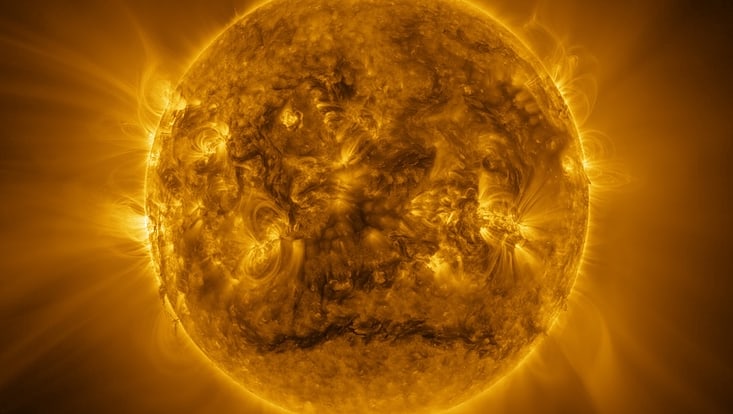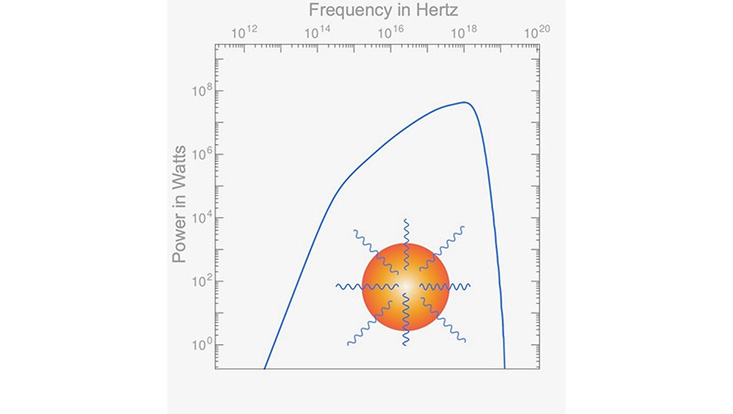Ready to explore a new frontierGravitational waves from the Sun
6 August 2025
It’s not just sunshine that comes from our nearest star — according to new research by IFIC, DESY and the Cluster of Excellence Quantum Universe at the University of Hamburg, the Sun also emits ultra-weak gravitational waves over an enormous frequency range. These gentle ripples in space and time could one day shed new light on the early Universe. This theory challenges old assumptions and sets the stage for future discoveries using next-generation gravitational wave detectors.
A collaboration between researchers at the Instituto de Física Corpuscular (IFIC, CSIC–Universitat de València), DESY and the Cluster of Excellence Quantum Universe has led to the most detailed prediction of gravitational waves generated by the Sun to date. Gravitational waves are ripples in the very fabric of space and time, which can be thought of as faint vibrations passing through the Universe, often produced when massive objects move or collide. According to the theoretical study, published today in Physical Review Letters, ordinary processes inside the Sun constantly emit a very weak, high-frequency background of gravitational waves. “High-frequency” in this context means that these waves oscillate or vibrate very rapidly—more so than the gravitational waves currently measured from cosmic events like merging black holes. The study predicts that the Sun emits an extremely faint gravitational-wave signal that, while currently undetectable, sets a well-defined reference point for future exploration – meaning that detectors of the future should be able to record it.
From low to high frequencies
While current gravitational wave detectors focus on low-frequency signals—such as those produced by black hole or neutron star mergers—a rapidly growing scientific community has begun exploring the high-frequency frontier. This nascent field has taken shape over just the past few years, fueled by a wave of new theoretical ideas and experimental concepts aimed at detecting signals from the early Universe. These high-frequency bands were previously assumed to be free of astrophysical backgrounds. However, the new study challenges that assumption.
“This offers a perspective on high-frequency gravitational waves that has largely been overlooked,” says Camilo García-Cely from IFIC, who carried out the work in collaboration with DESY theorist Quantum Universe principal investigator Andreas Ringwald. “We now understand that even ordinary stars like the Sun emit gravitational radiation at high frequencies, at levels comparable to what we expect from early-Universe phenomena.”
“The Sun doesn’t shine much in gravitational waves— at least we're not able to see it with presently available technology.” notes Ringwald. “But from an optimistic perspective, that leaves a wide discovery space for new physics. Whether such waves can be measured in the future remains uncertain, however, if it becomes possible, they could potentially offer insights into the inner structure of the Sun.”
Many experiments are on the hunt
DESY is currently exploring ways to extend its contributions to experimental efforts in this area. These include experiments such as ALPS II, BabyIAXO, MADMAX, MAGO and NEST—all of which aim to detect weak signals from axions or high-frequency gravitational waves. Axions are theoretical particles that could help explain dark matter, which is the mysterious substance making up much of the Universe’s mass. Notably, the IFIC group led by García-Cely, supported by a coordinated national Spanish grant, has played an active role in studying high-frequency gravitational waves both in above mentioned experiments.
The study revisits an idea introduced in the 1960s by Steven Weinberg—one of the foundational figures in modern particle physics. While Weinberg estimated the total gravitational wave power emitted by the Sun, he did not provide a detailed spectrum. “We extend his legacy by including additional physical effects and providing a complete, physically consistent spectrum across a wide range of frequencies,” García-Cely explains.
“It was truly enjoyable to engage with all the different areas of physics involved,” reflects Ringwald. “This kind of interdisciplinary approach is essential if we are to probe the Universe at its most fundamental level.”




